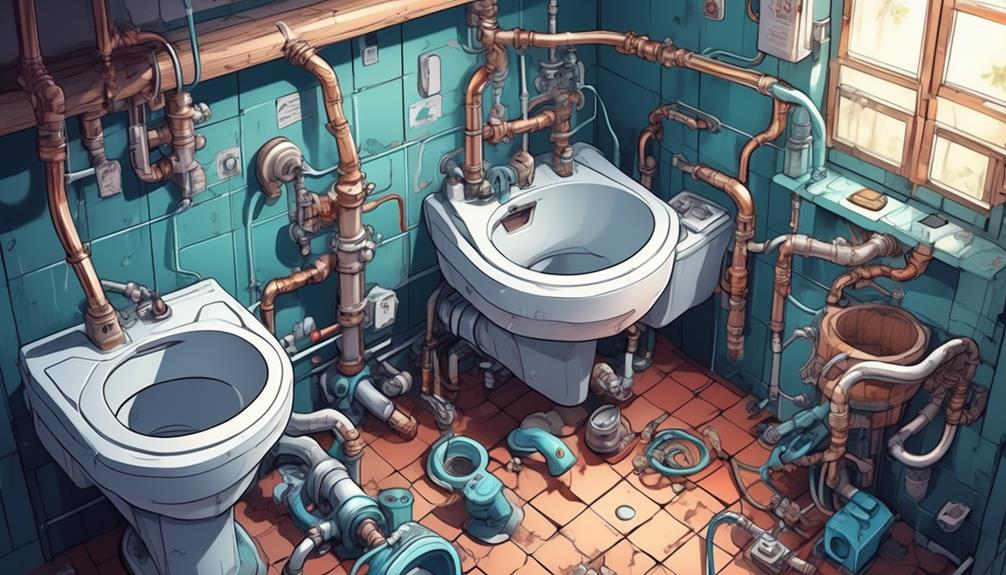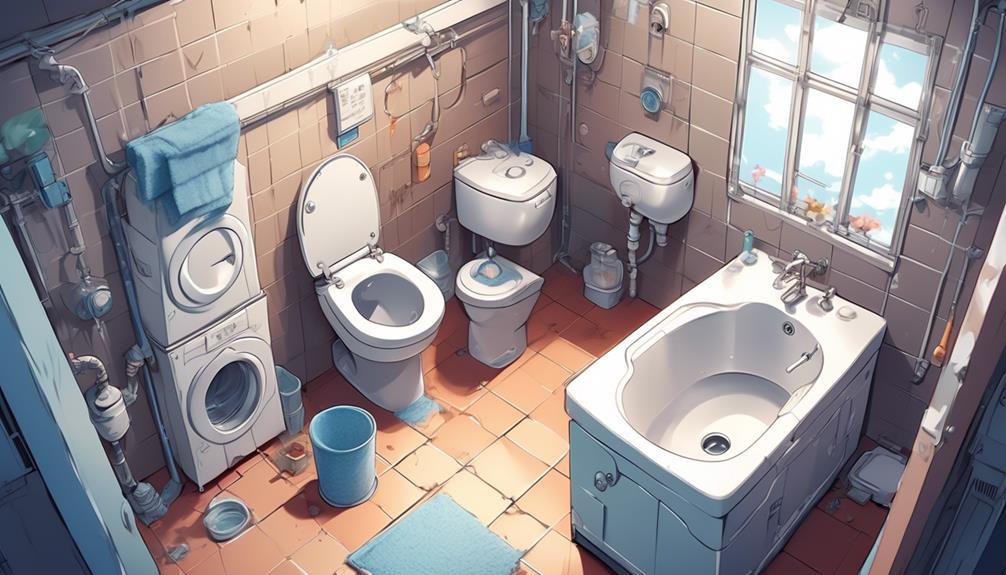Nearly 30% of US households share a drain system for their washer and toilet, saving space and simplifying plumbing. However, it’s important to consider potential challenges, safety concerns, and regulations before combining laundry and bathroom functions.
Consulting a professional plumber can help you determine if a shared drain system is feasible for your home and address any specific considerations for your plumbing installation.
Plumbing Considerations for Shared Drain

When you have a shared drain for your washer and toilet, there are some important plumbing considerations to keep in mind.
The drain pipe needs to have enough capacity to handle the combined flow from both the washer and the toilet. It should be properly sized and sloped to allow for efficient drainage and prevent clogs.
You also need to install a P-trap and vent pipe for the shared drain system. The P-trap traps debris and prevents sewer gases from entering your home, while the vent pipe allows for proper air circulation and prevents vacuum or siphoning effects.
Regular maintenance and inspection of the shared drain system is crucial to detect and address any potential issues such as leaks, blockages, or corrosion.
Potential Challenges and Solutions
To keep your shared drain for the washer and toilet working properly, it’s important to know about potential issues and how to fix them.
- Drain Blockage: Sometimes, stuff can clog up the drain and cause backups. To fix this, clean the drain regularly using a drain snake or chemical cleaner. Also, don’t flush big things down the toilet or washing machine.
- Ventilation Problems: If there’s not enough ventilation, it can cause odors and slow drainage. Make sure the washer and toilet have good venting systems. Check the vent pipes to keep air pressure balanced and drainage efficient.
- Water Pressure Imbalances: If the washer and toilet share the same water supply, water pressure imbalances can happen. This can cause weak flushing or backups. Install pressure regulators or adjust the water pressure to keep the flow consistent.
- Plumbing Design: Bad plumbing design can cause problems like water hammer or cross-contamination. Get a professional plumber to make sure everything is installed right and follows building codes.
Safety Concerns and Regulations

To ensure the safety and compliance of your shared drain for the washer and toilet, it’s important to understand the required regulations and potential safety concerns.
Plumbing codes and regulations are in place to protect building occupants and the environment.
Backflow is a key safety concern when sharing a drain between a washer and a toilet. Backflow can contaminate the water supply, so it’s important to install a backflow prevention device to stop wastewater from flowing back into the clean water supply.
Adequate ventilation is crucial for the shared drain to prevent the buildup of harmful gases, such as sewer gas, which can be hazardous to your health. Ventilation pipes should be properly sized and positioned to allow for the proper flow of air and gases.
Follow the manufacturer’s instructions for the washer and toilet for proper installation and usage. Regular maintenance and inspections are essential to identify and address any potential issues promptly.
Pros and Cons of Having a Shared Drain
To weigh the advantages and disadvantages of a shared drain, it’s crucial to consider the impact it can have on both the safety and functionality of your plumbing system. Here are the pros and cons you need to know:
Advantages:
- Cost-effective: Sharing a drain between a washer and toilet can save you money on installation and maintenance. You won’t need to invest in separate plumbing lines, reducing both material and labor costs.
- Space-saving: Having a shared drain means you can maximize the available space in your laundry or bathroom area. This can be especially beneficial in smaller homes or apartments where every square footage matters.
- Convenience: With a shared drain, you won’t have to worry about multiple drain lines or the need for additional plumbing fixtures. It simplifies the plumbing system and makes maintenance and repairs easier.
Disadvantages:
- Increased risk of clogs: The main downside of a shared drain is the higher risk of clogs. If one fixture experiences a blockage, it can affect the other fixture as well. This can lead to frequent backups and potential damage to your plumbing system.
The decision to have a shared drain should be based on your specific needs and circumstances. Consider consulting with a professional plumber to ensure the safety and functionality of your plumbing system.
The below video shows how you can use a drain snake to clean the clogs in drains.
